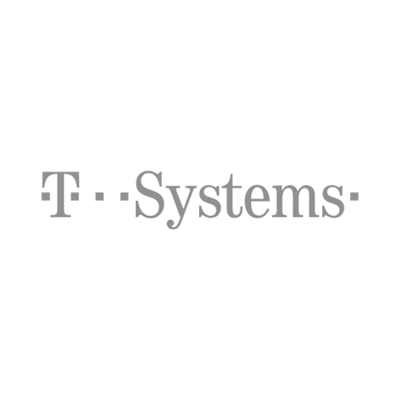Integrating ERP with IT systems – for example, those that have been in place in the company for years and discontinuing them would be a real challenge – is inherently a significant implementation problem. However, this does not mean that it should be immediately deemed an impossible task.
Modern businesses increasingly operate in complex technological environments, where the ERP system is just one element in the IT ecosystem. Alongside ERP, there are CRM systems, supply chain management (SCM) systems, business intelligence tools, e-commerce applications, and IoT solutions. Effective integration of the ERP system with other IT components is crucial for ensuring smooth data flow, improving operational efficiency, and supporting strategic business goals.
Why is ERP integration so important for the company?
Integrating the ERP system with other components of the IT environment is a fundamental step towards achieving a holistic view of the company’s operations. Modern organizations operate in complex technological ecosystems where data is generated from various sources, such as CRM systems, SCM, e-commerce platforms, or analytical tools. In this context, ERP serves as a central repository, enabling not only the collection but, more importantly, the harmonization, processing, and sharing of data in a coherent and organized way.
Centralizing data in the ERP system eliminates so-called information silos – situations where different departments of the company operate on isolated data resources, which hinders collaboration and causes discrepancies in analyses. For example, without integration between the SCM system and ERP, production departments may not have access to real-time information about raw material availability, leading to delays in fulfilling orders. As noted by Forrester Research:
“Companies that successfully integrate ERP with other IT systems increase their ability to make data-driven decisions, leading to greater operational efficiency and better resource utilization.”
Lack of integration generates numerous operational and strategic issues. Duplicating work due to the need for manually transferring data between systems not only decreases efficiency but also increases the risk of errors. Data entered multiple times in various places can become modified or inconsistent, leading to discrepancies and lowering the quality of the information used for decision-making. As a result, processes like resource planning, production management, and demand forecasting become less accurate, negatively affecting the company’s competitiveness.
Let’s look at this in the context of manufacturing companies – they act as a litmus test for what problems can arise from lack of integration. Without proper connection between ERP and SCM, the company may have limited capabilities to monitor inventory levels in real time. The absence of this information causes delays in material deliveries, which, in turn, leads to production downtimes and unmet commitments to customers. Such situations generate additional operational costs and damage the company’s reputation.
An integrated ERP system enables continuous data flow between all essential components of the IT environment. For example, order information from the CRM system can be automatically transmitted to the ERP, where the data is processed to update inventory levels in the SCM. This ensures that the sales, production, and logistics departments can operate in full synchronization, eliminating delays and maximizing operational efficiency.
Moreover, integrating ERP with other IT systems not only improves efficiency but also allows for more advanced data analysis. Thanks to the central repository, the organization gains access to consistent and complete information, which can be used in “what-if” scenario modeling, predictive analytics, or monitoring key performance indicators (KPIs). This perspective enables better resource utilization, process optimization, and the identification of areas that need improvement.
In conclusion, integrating ERP with other IT systems is the foundation of modern enterprise management. It eliminates information barriers, automates data flow, and increases operational transparency. As a result, companies can respond more quickly to changing market conditions, make better strategic decisions, and build their competitive advantage based on data that is not only current but also reliable and consistent. That’s why effective ERP integration should be a priority in the digital transformation processes of any company.
Key strategies for effective ERP integration
How should ERP integration be approached in a company? As expected, each case should be treated individually – it would be a mistake to view the process as a one-size-fits-all solution.
API-first approach Modern ERP systems, such as SAP S/4HANA, offer advanced APIs that allow integration with other systems in real-time. APIs enable data exchange between ERP and external systems like CRM or e-commerce applications without the need for complex point-to-point connections. As noted by Gartner:
“API-first is a strategy for the future, enabling flexible and scalable integration of IT systems, reducing complexity and maintenance costs.”
Middleware as an intermediary layer Middleware, such as SAP Integration Suite or MuleSoft, acts as an “intermediary” between ERP and other IT systems. It ensures the consistency of data flow, allows for mapping and transformation of information, and facilitates monitoring integration processes. Middleware is particularly useful in multi-system environments where different applications use different data formats and communication protocols.
Real-time integration vs. batch integration Organizations must decide which data needs to be synchronized in real time and which can be processed in batch mode. For example, order data may require immediate synchronization between ERP and CRM, while financial reports may be generated daily. This decision impacts system performance and the integration structure.
Using the cloud Cloud solutions, such as SAP Integration Suite or AWS AppFlow, enable easy ERP integration with other cloud applications, eliminating the need to maintain complex on-premise infrastructure. The cloud also offers scalability and automatic updates, reducing the costs and time associated with managing integration.
Effective ERP integration in an e-commerce company
How does this work in practice? Let’s analyze the integration process in a company we’ll call ShopEx. This is a medium-sized e-commerce business struggling with issues arising from lack of integration between its ERP, CRM, and sales platform systems. The key challenges included: lack of automatic synchronization of inventory levels, delays in order fulfillment, and errors in sales reports.
The solution was the implementation of SAP S/4HANA with full integration with the Shopify e-commerce platform and Salesforce CRM system via MuleSoft middleware. API integration enabled real-time data exchange, solving the issue of delays and inventory discrepancies. Middleware also ensured data format consistency between systems and allowed for monitoring integration processes.
As a result, ShopEx achieved the following benefits:
- 20% faster order fulfillment thanks to automatic data synchronization between the e-commerce platform and ERP (which is particularly important in the e-commerce industry).
- Elimination of errors in sales reports through real-time automated report generation.
- A 15% reduction in operational costs due to simplified data management processes.
Is it worth paying so much attention to integration?
Absolutely yes! Effective integration brings a range of tangible benefits that directly impact the operational and strategic efficiency of the organization. Above all, it allows for a unified view of all business processes. With centralized access to data from various areas of the business, such as finance, production, and sales, organizations can make decisions based on consistent, current, and complete information. The ability to analyze data in a single, integrated environment significantly increases the precision of actions and the speed of response to changing market conditions.
Integration also supports process automation, eliminating the need for manual data transfer between systems. Manual operations are not only time-consuming but also prone to errors that can lead to data discrepancies and delays in executing key tasks. Automation reduces these risks while freeing up human resources that can be directed towards higher-value activities, such as analysis or strategic planning.
Another significant benefit of integration is increased flexibility. In a dynamically changing business environment, organizations must be able to quickly adapt their IT systems to new requirements, whether related to expansion, changing regulations, or the implementation of new technologies. An integrated IT environment allows for seamless expansion of system functionalities without costly changes to the technological architecture.
The value of ERP integration extends beyond operational benefits, also impacting the strategic capabilities of the organization. Effective integration allows companies to build a competitive advantage through better resource management, greater operational transparency, and the ability to quickly adapt to new market challenges. It’s one of the key elements of any successful digital transformation strategy.
Integrating ERP with other IT systems is a key element of digital transformation for businesses. Appropriate strategies, such as the API-first approach, the use of middleware, and real-time integration, enable seamless data exchange and increase operational efficiency. In multi-system environments, selecting the right tools and technologies determines the success of integration. As Gartner emphasizes:
“Effective ERP integration is the foundation of modern business management, eliminating barriers between systems and enabling full synchronization of processes.”
Contact our team to learn how to carry out ERP integration in your organization and fully leverage the potential of digital tools.

























